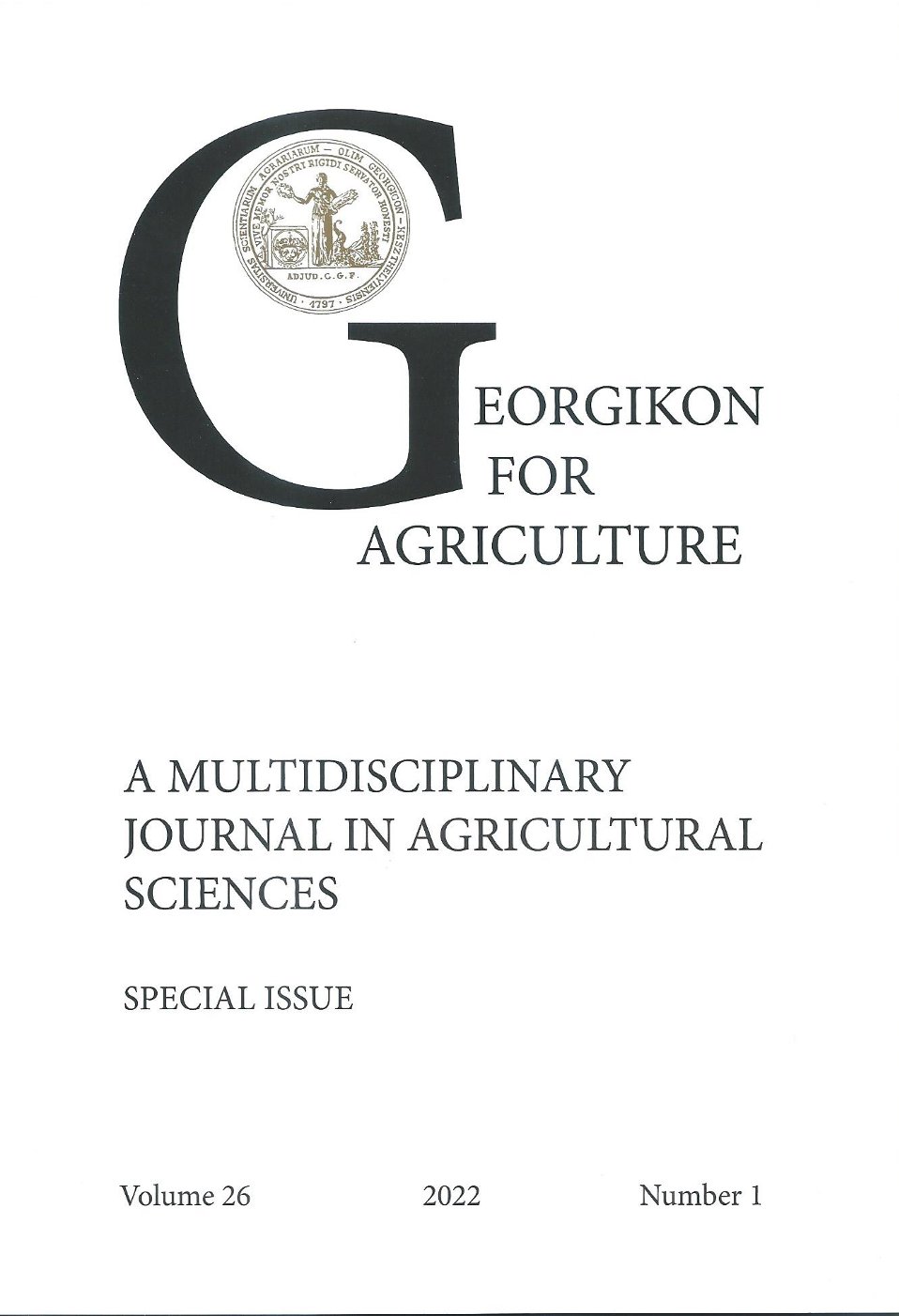Poszt-harveszt peszticidek alkalmazástechnológiája az élelmiszerbiztonság fényében
Keywords:
pesticides, food safety, Penicillium digitatum, Penicillium italicum, post-harvest plant protectionAbstract
One of the significant food safety problems to be solved in our globalized society is the mold infection that occurs during the storage and transport of farmed vegetables and fruits, which is caused by various fungal species, such as Aspergillus or Penicillium strains. Penicillium digitatum (green mold) and Penicillium italicum (blue mold) are responsible for nearly 90% of post-harvest losses in citrus fruits, which is probably due to the fact that a natural defense response does not develop or is not effective enough in the fruit after P. digitatum infection. In P. digitatum infected citrus, the production of hydrogen peroxide related to the control decreased.
References
Macarisin, D., Cohen, L., Eick, A., Rafael, G., Belausov, E., Wisniewski, M. and Droby, S. 2007. Penicillium digitatum Suppresses Production of Hydrogen Peroxide in Host Tissue During Infection of Citrus Fruit. Phytopathology. 97(11). 1491-1500.
Droby, S., Cohen, L., Daus, A., Weiss, B., Horev, B., Chalutz, E., Katz, H., Keren-Tzur, M., and Shachnai, A. 1998. Commercial testing of aspire: A yeast preparation for the biological control of postharvest decay of citrus. Biol. Control. 12. 97-101.
El-Ghaouth, A., Smilanick, J., and Wilson, C. 2000. Enhancement of the performance of Candida saitoana by the addition of glycolchitosan for the control of postharvest decay of apple and citrus fruit. Postharvest Biol. Technol. 19. 103-110.
Mohammadi, P., Tozlu, E., Kotan, R. and Kotan, Senol M. 2017. Potential of some bacteria for biological control of postharvest citrus green mould caused by Penicillium digitatum. Plant Protect. Sci. 53.
Michael E. Wisniewski and Charles L. Wilson 1992. Biological control of postharvest diseases of fruits and vegetables: recent advances. Hortscience. 27(2). 94-98.
E. Feliziani and G. Romanazzi 2016. Postharvest decay of strawberry fruit: Etiology, epidemiology, and disease. Journal of Berry Research. 6. 47-63.
Smilanick, J. L., Mansour, M. and Sorenson, D. 2006. Pre- and postharvest treatments to control green mold of citrus fruit during ethylene degreening, Plant Dis. 90. 89-96.
MacKenzie, S. J., and Peres, N. A. 2012. Use of leaf wetness and temperature to time fungicide applications to control Botrytis fruit rot of strawberry in Florida. Plant Dis. 96. 529-536.
McKay, A. H., Förster, H., and Adaskaveg, J. E. 2012. Efficacy and application strategies for propiconazole as a new postharvest fungicide for managing sour rot and green mold of citrus fruit. Plant Dis. 96. 235-242.
Kanetis, L., Förster, H., and Adaskaveg, J. E. 2007. Comparative efficacy of the new postharvest fungicides azoxistrobin, fludioxonil, and pyrimethanil for managing citrus green mold. Plant Dis. 91. 1502-1511.
Bernabò, I., Guardia, A., Macirella, R. et al. 2017. Chronic exposures to fungicide pyrimethanil: multi-organ effects on Italian tree frog (Hyla intermedia). Sci Rep. 7. 6869.
Parveen, Z., Riazuddin, A., Iqbal, S., Bhutto, M.A. and Khuhro, M.I. 2011. Monitoring of multiple pesticide residues in some fruits in Karachi, Pakistan. Pakistan Journal of Botany. 43(4). 1915-1918.
Ortelli, Didier, Edder, Patrick and Corvi, Claude 2005. Pesticide residues survey in citrus fruits, Food Additives & Contaminants 22(5). 423-428.
Paolo Cabras, Paolo Diana, Marco Meloni, and Filippo M. Pirisi 1982. Residue determination of some insecticides and fungicides on grapes by reversed-phase high-performance liquid chromatography Journal of Agricultural and Food Chemistry. 30(3). 569-572
Buzás A. és Lányi K. 2019. A citrusfélék gomba elleni védelmének élelmiszer-egészségügyi vonatkozásai HuVetA. URL: http://www.huveta.hu/handle/10832/2320
Downloads
Published
Issue
Section
License
Copyright (c) 2022 Anna Buzás, Katalin Lányi

This work is licensed under a Creative Commons Attribution-NonCommercial-NoDerivatives 4.0 International License.
Cikkre a Creative Commons 4.0 standard licenc alábbi típusa vonatkozik: CC-BY-NC-ND-4.0. Ennek értelmében a mű szabadon másolható, terjeszthető, bemutatható és előadható, azonban nem használható fel kereskedelmi célokra (NC), továbbá nem módosítható és nem készíthető belőle átdolgozás, származékos mű (ND). A licenc alapján a szerző vagy a jogosult által meghatározott módon fel kell tüntetni a szerző nevét és a szerzői mű címét (BY).




